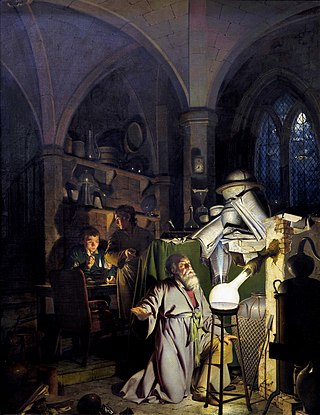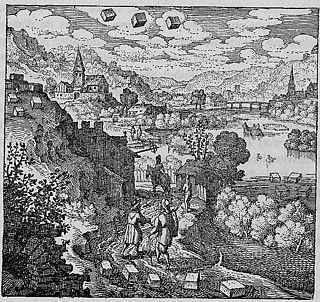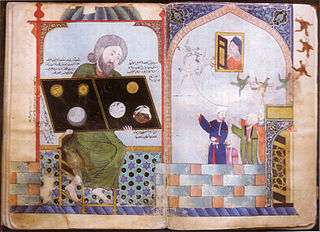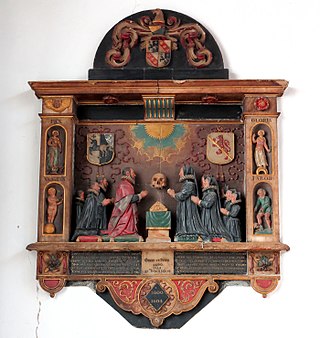
Carl Gustav Jung was a Swiss psychiatrist, psychotherapist and psychologist who founded the school of analytical psychology. He was a prolific author, illustrator, and correspondent, and a complex and controversial character, perhaps best known through his "autobiography" Memories, Dreams, Reflections.

The philosopher's stone is a mythic alchemical substance capable of turning base metals such as mercury into gold or silver; it was also known as "the tincture" and "the powder". Alchemists additionally believed that it could be used to make an elixir of life which made possible rejuvenation and immortality.

In alchemy and philosophy, prima materia, materia prima or first matter, is the ubiquitous starting material required for the alchemical magnum opus and the creation of the philosopher's stone. It is the primitive formless base of all matter similar to chaos, the quintessence or aether. Esoteric alchemists describe the prima materia using simile, and compare it to concepts like the anima mundi.

The Aurora consurgens is an alchemical treatise of the 15th century famous for the rich illuminations that accompany it in some manuscripts. While in the last century, the text has been more commonly referred to as "Pseudo-Aquinas", there are as well arguments in favour of Thomas Aquinas, to whom it has originally been attributed in some manuscripts. The translated title from Latin into English is "Rising dawn."

Zosimos of Panopolis was a Greek alchemist and Gnostic mystic who lived at the end of the 3rd and beginning of the 4th century AD. He was born in Panopolis, and flourished ca. 300. He wrote the oldest known books on alchemy, which he called "Cheirokmeta," using the Greek word for "things made by hand." Pieces of this work survive in the original Greek language and in translations into Syriac or Arabic. He is one of about 40 authors represented in a compendium of alchemical writings that was probably put together in Constantinople in the 7th or 8th century AD, copies of which exist in manuscripts in Venice and Paris. Stephen of Alexandria is another.

Gerhard Dorn was a Belgian philosopher, translator, alchemist, physician and bibliophile.
Adam McLean is a Scottish writer on alchemical texts and symbolism. In 1978 he founded the Hermetic Journal which he published until 1992 during which time he also started publishing the Magnum Opus Hermetic Sourceworks, a series of 55 editions of key source texts of the hermetic tradition. From 2004 he began collecting tarot cards in order to document tarot art and built up a collection of 2500 items. In 2016 he set up the Surrealism Website in order to document surrealist painters. This currently shows the work of 100 surrealist artists. He also created a series of 20 video lectures on many facets of surrealist paintings. In 2017 he set up an art gallery The Studio and Gallery in Kilbirnie in North Ayrshire in order to promote the work of emergent and lesser-known artists. In 2023 McLean began publishing, in book form, his Alchemical Translations Series of translations of 16-18th Century German, Latin and French alchemical works previously unavailable in English. This project is intended to expand the public's perception of the richness of alchemical literature.

Rubedo is a Latin word meaning "redness" that was adopted by alchemists to define the fourth and final major stage in their magnum opus. Both gold and the philosopher's stone were associated with the color red, as rubedo signaled alchemical success, and the end of the great work. Rubedo is also known by the Greek word iosis.
The idea of polytheistic myth as having psychological value is one theorem of archetypal psychology as defined by James Hillman, and explored in current Jungian mythology literature. According to proponents of this theory, polytheistic myths can provide psychological insight.
Psychology and Alchemy, volume 12 in The Collected Works of C. G. Jung, is Carl Jung's study of the analogies between alchemy, Christian dogma, and psychological symbolism.

Alchemical Studies, volume 13 in The Collected Works of C. G. Jung, consists of five long essays by Carl Jung that trace his developing interest in alchemy from 1929 onward. Serving as an introduction and supplement to his major works on the subject, the book is illustrated with 42 drawings and paintings by Jung's patients.

Muḥammad ibn Umayl al-Tamīmī, known in Latin as Senior Zadith, was an early Muslim alchemist who lived from c. 900 to c. 960 AD.

Sir George Ripley was an English Augustinian canon, author, and alchemist.

The Mutus Liber, or Mute Book, is a Hermetic philosophical work published in La Rochelle in 1677. It ranks amongst the major books on alchemy in Early Modern literature, just as much as does Atalanta Fugiens by Michael Maier. It has been reprinted numerous times.

Theatrum Chemicum is a compendium of early alchemical writings published in six volumes over the course of six decades. The first three volumes were published in 1602, while the final sixth volume was published in its entirety in 1661. Theatrum Chemicum remains the most comprehensive collective work on the subject of alchemy ever published in the Western world.

The Bollingen Tower is a structure built by Swiss psychiatrist Carl Jung. In appearance, it is a small castle with four towers. It is located in the village of Bollingen on the shore of the Obersee basin of Lake Zürich.

The Rosary of the Philosophers is a 16th-century alchemical treatise. It was published in 1550 as part II of De Alchimia Opuscula complura veterum philosophorum (Frankfurt). The term rosary in the title is unrelated to the Catholic prayer beads; it refers to a "rose garden", metaphoric of an anthology or collection of wise sayings.
The following outline is provided as an overview of and topical guide to alchemy:

The Layer monument is an early 17th-century polychrome marble mural monument erected in the memory of the lawyer Christopher Layer (1531–1600), and located in the Church of Saint John the Baptist, Norwich.

The Layer Quaternity are four marble sculpture figurines approximately 25 centimetres (10 in) in height located on the two columns of the Layer Monument, an early 17th-century polychrome mural monument which was installed in the Church of Saint John the Baptist, Maddermarket, Norwich to the memory of Christopher Layer (1531–1600).















